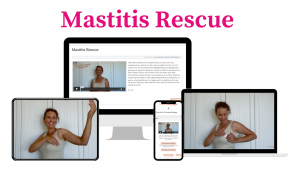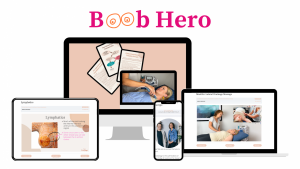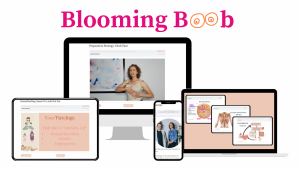An ill-fitting bra isn’t just uncomfortable, it can negatively impact your body, your milk production and your baby. If a bra is too big, it won’t offer you the support you need, resulting in back aches and the potential of ligament damage, which can increase sagging over time. On the flip side, if a bra is too small it can lead to blocked ducts, which can develop into mastitis if left untreated. You’ll also be incredibly uncomfortable, with marks and dents on your body, aching ribs or even rashes and sweat pimples.
So with that being said, it’s pretty clear that a correctly fitting maternity bra is vital! But not all maternity bras are created equal, so let’s break it down to help you on your bra shopping journey.
What Is a Maternity Bra or Nursing Bra?
Traditionally a maternity bra is one that’s worn during pregnancy, while a nursing bra is worn while breastfeeding. These days the terms are often used interchangeably, and usually refer to a bra with nursing capabilities.
It’s important to switch to maternity/nursing bras as soon as you notice changes in your breasts during pregnancy, but with the cost of living at an all time high, it’s a better investment to purchase nursing bras so that you continue to get use out of them postpartum.
Difference Between a Nursing Bra and a Regular Bra?
Put plainly, a nursing bra facilitates breastfeeding through features like a drop-down cup, pull-aside design, zipper, press stud, or similar mechanism to expose the breast. Just as there are various types of regular bras, nursing bras also come in a wide array of styles and designs.
Just as there are good and bad regular bras, not all nursing bras are built the same. There’s some features you should always look out for, which we’ll touch on later in this blog.
Did you know? When comparing a lactating breast to a non-lactating breast of equal size, the former weighs approximately 30% more. This increase isn't solely due to milk volume but rather the presence of dense tissues and intricate milk duct systems that contribute to the lactating breast's capacity..
Types of Maternity Bras and When They Should Be Worn
| Trimester | Type of Bra | Why |
| 1 | Seamless | Development of your mammary glands can lead to tenderness and rapid growth. |
| 2-3 | Any style, including flexi-wire, wire-free & seamless | Your breast size should be regulated by now with the only growth occurring in the diaphragm. |
| Last month of pregnancy | Seamless | Towards the end of your pregnancy, the milk ducts will be gearing up to make milk and it’s best to avoid any pressure on the breast tissue. Besides, you’ll want to be your most comfortable as your baby is at its largest. |
| 6-8 weeks postpartum | Seamless | During the period when your milk comes in, fluctuations in breast size can range from 3 to 5 cup sizes, while your baby feeds every few hours. Opting for a supportive and comfortable seamless bra is essential during this time to prevent ligament damage and ensure unimpeded flow in the ducts. |
| 8+ weeks postpartum | Any style, including flexi-wire, wire-free & seamless | Once your milk flow regulates, you'll experience fewer fluctuations. Wait until you observe a consistent size in your breasts before shopping for your ideal nursing bra. |
Bra Shopping Tip: Roughly 80% of pregnant women have the same breast size in their eighth month of pregnancy as they will at 8 weeks postpartum, once their milk flow has regulated. It's important to differentiate between breast size and bra size, as your ribcage typically expands during pregnancy. When purchasing a maternity bra in your eighth month, ensure a snug fit by fastening it on the last hook and eye. This allows for adjustment as your ribcage returns to its pre-pregnancy size postpartum.
Benefits of a Good Maternity Bra
There’s three things you should always look for when shopping for a maternity bra; fit, comfort and support.
Fit:
To achieve a perfect fit, the band, cups and straps all need to be the correct size and well adjusted. Here’s how you tell whether you have the correct fit:
- Band: This should be firm but not too tight, and run parallel to the ground. If it’s riding up your back it’s too large and won’t be providing enough support, and if it’s too tight you may be damaging your breast tissue.
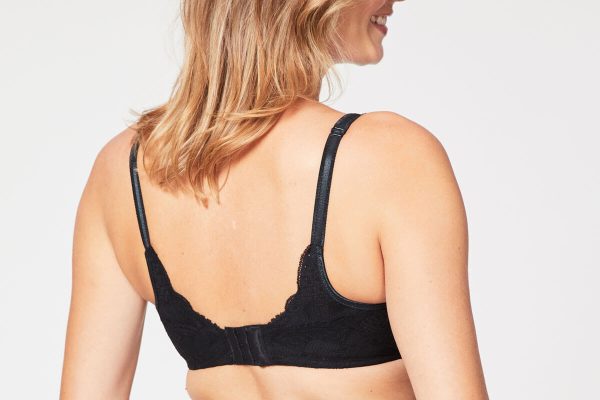
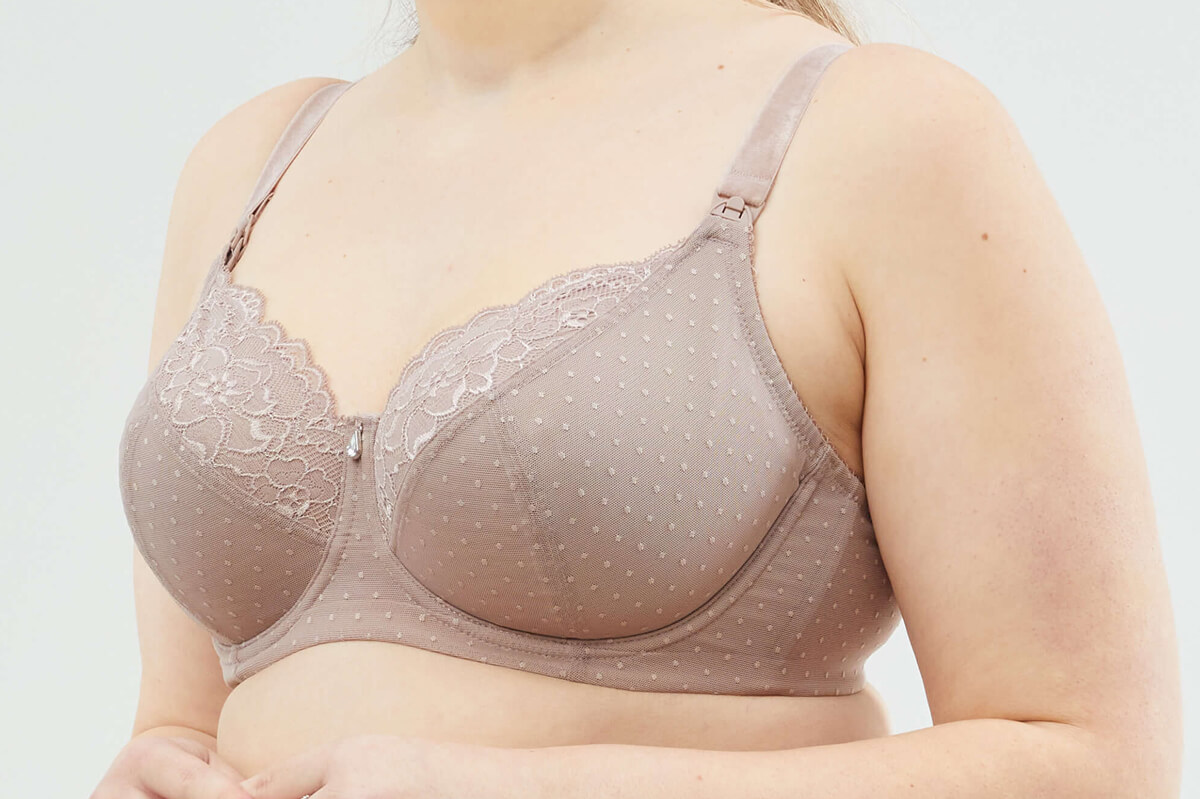
- Cups: Whether or not they have a flexi-wire, the cups should always fully encase the breast tissue and the wire or channel (in the case of a wire-free bra) should lay flat against your ribcage.
If you’re wearing a seamless bra, your breasts shouldn’t be squished together or overly compressed. The general rule of thumb is that each breast should be separated, if they’re not, go up a cup size. There should be enough room and stretch in the cup’s top cup edge for you to easily run two fingers between your breast and the cup.
3. Straps: A correctly adjusted strap will also allow you to run two fingers underneath them. This will ensure they’re taking the weight of your breasts but not digging in. Each time you put your bra on, check the sliders are still in the right position (and remember to tighten them overtime as the elastic weakens). This will ensure your bra is doing the work, rather than your ligaments.
Comfort:
A quality maternity bra should feel like a second skin, considering you'll be wearing it day and night. Natural fibers like bamboo or cotton are optimal choices for comfort. Alternatively, modern microfiber yarns offer breathability, softness, and durability.

The sling plays a crucial role in supporting both the strap and your breast during nursing. Without proper cup support, there's excessive tension on the sling. Opt for a bra with a folded-edge sling, as it stretches to accommodate your bust capacity without digging into breast tissue during feeds.
Support:
Individuals with larger cup sizes can attest that a truly comfortable bra is one that provides ample support. Comprehensive support across various aspects of fit is crucial, including supportive cups, straps, and bands. Seek bras with double layers, additional support frames around the cups, high-quality and broad elastics, durable fabrics, and wide, multi-hook closures for optimal comfort and support.
Features of a Good Maternity Bra
- 6 hook and eye closures to allow for ribcage expansion.
- Stretch in the top cup to accommodate fluctuations.
- Wide straps with minimal stretch.
- Double layered cups made with high quality yarn.
- Cotton lining for breathability.
- Support in the lower cup and channels.
- Folded edge slings.
- At least 5% elastane content for longevity.
Common Fitting Issues
When faced with a bra that doesn't fit well in the bust, many women opt to go up a size. However, in the case of multi-sized garments like seamless bras, this adjustment might result in inadequate breast support, as the band could end up being too loose. Fortunately, several reputable maternity brands offer multi-cup fitting bras, catering to various bust sizes, including petite, busty, and extra-busty options, ensuring proper band fit even when adjusting cup size.
It's crucial to avoid any pressure on your breasts, especially during pregnancy and nursing. While soft cup or wire-free bras may seem comfortable, some can be rigid and fail to accommodate fluctuations. Therefore, it's advisable to wear these types of bras only during the second and third trimesters, and postpartum once milk flow has regulated.
Your bra band size should ideally align with your t-shirt size. If you typically wear a size 10 t-shirt, your band size is likely to be a 10 as well. Many women mistakenly believe they need a larger band size due to the practice of sister-sizing up, which involves increasing the band size to accommodate larger cup sizes. However, this approach is unnecessary, especially when brands offer multiple cup sizing options. For instance, a 10C bra typically offers similar cup capacity to a 12B.
No matter where you are in your pregnancy or breastfeeding journey, regardless of your preferred bra style or size, there's a perfect fit waiting for you. You shouldn't have to compromise comfort and support for fit. By following the fitting tips provided above, you'll find a maternity/nursing bra that meets your needs. A well-fitted bra should offer comfort and support, whether you're exercising, going about your daily activities, or sleeping. Prioritizing breast health is crucial for both you and your baby. Focus on finding the right fit, and you can confidently dedicate your time to being the best mom for your new baby without worrying about your bra or your breasts.
Katie is the proud mum of two beautiful girls and has been responsible for all the designs, style and fit at Cake Maternity for over a decade now.
Katie is a nursing bra specialist and a fit, pattern and grading technician. She is passionate about breastfeeding and the many benefits it offers to both mum, baby, and the environment.
She is determined to make the breastfeeding journey a comfortable, supportive, and beautiful one for all mums, understanding that it doesn’t always come easy to everyone. That’s why she has made it her mission to empower women as they mindfully navigate the world of motherhood and help make breastfeeding easier, through experience-driven innovation.



